This article relies largely or entirely on a single source .(November 2024) |
| Queensland Railways 6D11½ class | |||||||||||||||||
|---|---|---|---|---|---|---|---|---|---|---|---|---|---|---|---|---|---|
| |||||||||||||||||
| |||||||||||||||||
| |||||||||||||||||
The Queensland Railways 6D11½ class locomotive was a class of 0-6-0 steam trams operated by the Queensland Railways.
This article relies largely or entirely on a single source .(November 2024) |
| Queensland Railways 6D11½ class | |||||||||||||||||
|---|---|---|---|---|---|---|---|---|---|---|---|---|---|---|---|---|---|
| |||||||||||||||||
| |||||||||||||||||
| |||||||||||||||||
The Queensland Railways 6D11½ class locomotive was a class of 0-6-0 steam trams operated by the Queensland Railways.
In June 1883, Kitson & Co delivered three steam trams and six trailers for a proposed tramway in Brisbane from Ann Street to Petrie Bight. The tramway was not built and with the locomotives considered unsuitable for railway use, they were stored. Per Queensland Railway's classification system they were designated the 6D11½ class, 6D representing they were a tank locomotive with six wheels, and the 11½ the cylinder diameter in inches. [1]
In 1884 one was assembled at North Ipswich Railway Workshops and operated a trial from Ipswich to Brisbane. This confirmed its unsuitability for main line use, and it was instead employed as a shunter in Ipswich and South Brisbane. The other two were assembled and dispatched to Maryborough in 1888. They returned south in 1893 hauling trains on the Redbank-Bundamba Loop Line. All were withdrawn in 1902. [1]
Brush Traction was a manufacturer and maintainer of railway locomotives in Loughborough, England whose operations have now been merged into the Wabtec company's Doncaster UK operations.
The Sunlander was a long distance passenger rail service operated by Queensland Rail on the North Coast line between Brisbane and Cairns in Queensland between June 1953 and December 2014. It has been replaced by the Spirit of Queensland.

The rail network in Queensland, Australia, was the first in the world to adopt 1,067 mm narrow gauge for a main line, and, in 2013, was claimed to the second largest narrow gauge network in the world, consists of:

The Brisbane tramway network served the city of Brisbane, Australia, between 1885 and 1969. It ran on standard gauge track. The electric system was originally energised to 500 volts, and subsequently increased to 600 volts. All tramcars built in Brisbane up to 1938 had an open design. This proved so popular, especially on hot summer nights, that the trams were used as fundraisers and often chartered right up until the last service by social groups.

The earliest trams in Australia operated in the latter decades of the 19th century, hauled by horses or "steam tram motors". At the turn of the 20th century, propulsion almost universally turned to electrification, although cable trams lingered in Melbourne. In cities and towns that had trams, they were a major part of public transport assets.

The Queensland Railways C17 class locomotive are a class of 4-8-0 steam locomotives operated by the Queensland Railways.

The Queensland Railways BB18¼ class locomotive was a class of 4-6-2 steam locomotives operated by the Queensland Railways.
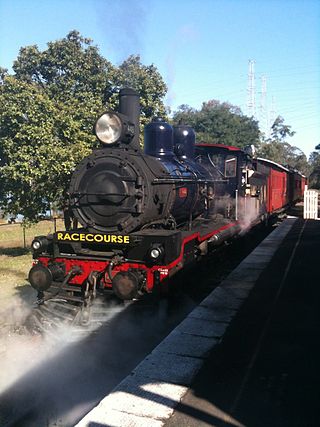
The Queensland Railways PB15 class locomotive is an old class of 4-6-0 steam engines operated by the Queensland Railways.
The Queensland Pioneer Steam Railway is located near Ipswich, Queensland, Australia and runs through the former West Moreton pioneering coal fields. It was first opened in 1881 by colliery proprietor and politician Lewis Thomas (1832-1913) as a tramway to his coal mines.

The Queensland Railways A10 Neilson class locomotive was a class of 0-4-2 steam locomotives operated by the Queensland Railways.

The Mount Perry Branch Railway is a closed railway line in Central Queensland, Australia. In 1869 copper was discovered at Mount Perry and the township grew rapidly. A railway to the coast was essential to provide cheap transport and make the mining of low percentage ore viable. Maryborough and Bundaberg vied for the opportunity to be the terminus and the latter city was successful.

The Queensland Railways B13 class locomotive was a class of 4-6-0 steam locomotives operated by the Queensland Railways.
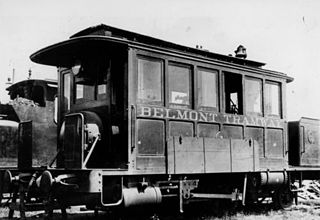
The Belmont Tramway was a short-lived railway in the south-eastern suburbs of Brisbane, the state capital of Queensland, Australia. It was built by the Belmont Shire Council and opened in 1912. Services were suspended several times and the line formally closed in October 1926.

The Sydney Steam Motor Trams were built for and operated by the New South Wales Government Tramways of Australia.
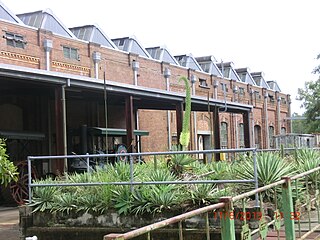
The Queensland Museum Rail Workshops is a railway museum in Ipswich, Queensland, located within the former North Ipswich Railway Workshops and tells the story of more than 150 years of railways in Queensland. Exhibits are spread out across a number of the complex's original buildings housing a collection of historic steam and diesel locomotives and other rolling stock that operated on Queensland Railways, as well as general interest exhibits and ones tailored specifically for children.
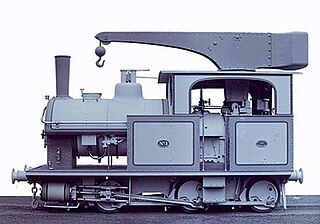
The Queensland Railways 6D11½ class locomotive was a class of 0-6-0ST steam locomotive operated by the Queensland Railways.
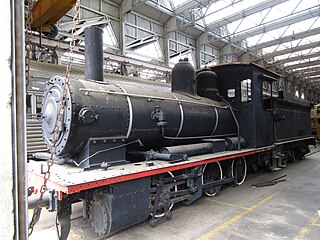
The Queensland Railways 6D13½ class locomotive was a class of 0-6-0T steam locomotives operated by the Queensland Railways.

The Queensland Railways 6D16 class locomotive was a class of 4-6-2T steam locomotives operated by the Queensland Railways.

The Queensland Railways Double Boilered Cross Locomotives class locomotive was a locomotive class of 0-6-6-0T steam locomotives built for, but never operated by, the Queensland Railways.

Rockhampton Council Tramways was a steam tram service which was operated by Rockhampton City Council from 1909 until 1939 in the city of Rockhampton, Queensland, Australia. Rockhampton was the only regional city in the state of Queensland to have had a tram service. The line has since been rebuilt and is operated as a tourist attraction by the Archer Park Rail Museum.